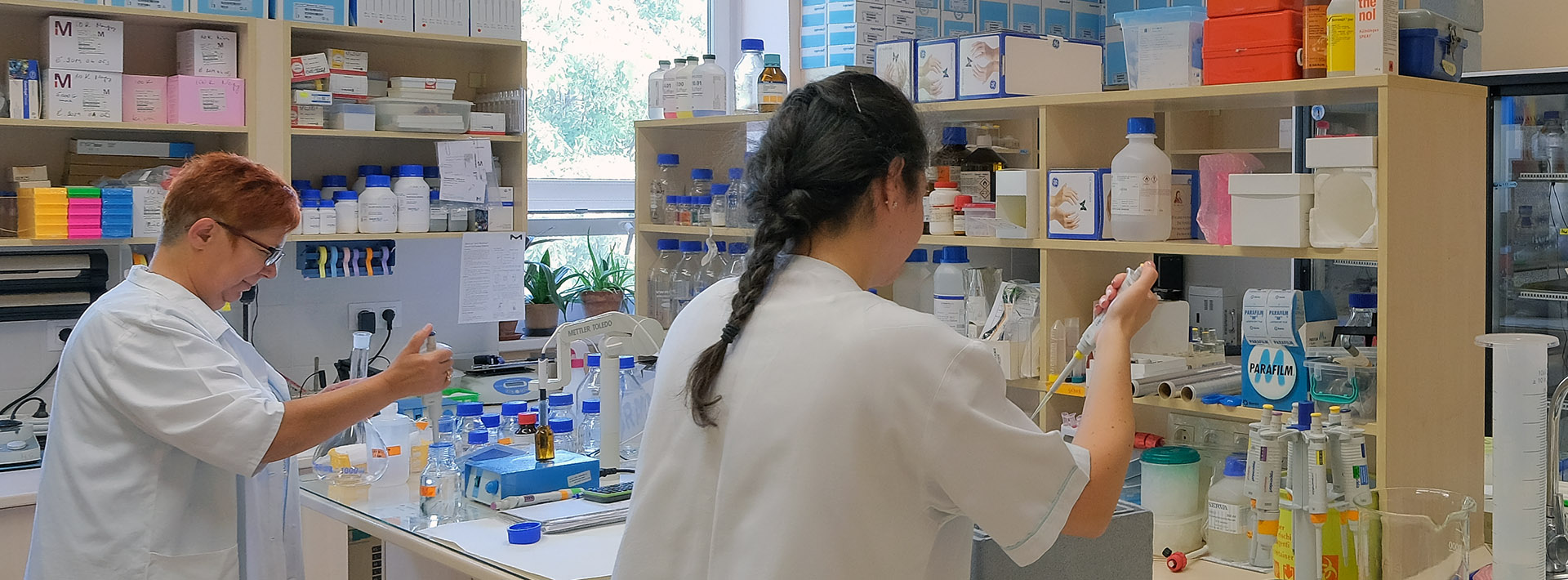Data
Official data in SubjectManager for the following academic year: 2024-2025
Course director
-
Lőrinczy Dénes
professor emeritus,
Department of Biophysics -
Number of hours/semester
lectures: 24 hours
practices: 0 hours
seminars: 0 hours
total of: 24 hours
Subject data
- Code of subject: OPF-IZM-T
- 2 kredit
- Pharmacy
- Optional modul
- spring
-
Course headcount limitations
min. 5 – max. 30
Topic
The structure of muscle based on light, phase contrast, polarized and electron microscopic observations. Elastic behaviour of passive and active muscle, types of muscle contractions, muscle force-length relationship. Work done by the muscle, muscle efficiency and heat production. Thermoelastic behaviour of muscle. Muscle models based on mechanical and structural investigations. Bioelectrical phenomena, excitation-contraction coupling. Energetics of muscle function, structure of muscle proteins (actin, myosin etc.), analysis of sliding model. Energetic and spectroscopic investigations in the research of molecular dynamic and thermodynamic background of muscle function.
Lectures
- 1. The composition of muscle. - Lőrinczy Dénes
- 2. The sorts of muscle. - Lőrinczy Dénes
- 3. The structure of muscle on the basis of light, phasecontrast and polarization microscope. - Lőrinczy Dénes
- 4. Structure of muscle by ELMI. - Lőrinczy Dénes
- 5. Sorts of muscle contraction. - Lőrinczy Dénes
- 6. Elastic behaviour of passive and active muscle. - Lőrinczy Dénes
- 7. Muscle force and length relationship, Hill`s equation. - Lőrinczy Dénes
- 8. Work and heat production done by a muscle, efficiency of muscle function. - Lőrinczy Dénes
- 9. Thermoelastic behaviour of muscle. - Lőrinczy Dénes
- 10. Muscle models proposed by mechanical and structural investigations. - Lőrinczy Dénes
- 11. Biochemical basis and energetics of muscle function. - Lőrinczy Dénes
- 12. Bioelectrical phenomena. Action potentials. - Lőrinczy Dénes
- 13. Nernst equation, G-H-K equation. - Lőrinczy Dénes
- 14. Voltage- and patch-clamp techniques. - Lőrinczy Dénes
- 15. Excitation-contraction coupling. - Lőrinczy Dénes
- 16. Structure of muscle proteins (actin and myosin, actomyosin complex). - Lőrinczy Dénes
- 17. Discussion of sliding model in details (x-ray diffraction). - Lőrinczy Dénes
- 18. Molecular dynamic background of muscle contraction (EPR spectroscopy) - Lőrinczy Dénes
- 19. Muscle in the sport and rehabilitation (wellness). - Lőrinczy Dénes
- 20. Principle of differential scanning calorimetry. - Lőrinczy Dénes
- 21. Thermodynamic background of muscle contraction (DSC results) - Lőrinczy Dénes
- 22. Muscle and levers in locomotion. - Lőrinczy Dénes
- 23. Written test. - Lőrinczy Dénes
- 24. Written test. - Lőrinczy Dénes
Practices
Seminars
Reading material
Obligatory literature
Literature developed by the Department
It will be announced at the beginning of the course depending on the possibilities of libraries of Biophysical Department, Faculty of Medicine. A permanent source could be the roaming in the Internet.
Notes
Recommended literature
Conditions for acceptance of the semester
The applicants - in the case of more than one absence (up to maximum three absences in which must not be the consultation or test) - should prepare and will be tested from the missed topics given by the instructor. In the case of more than three absences the course can not be accepted.
Mid-term exams
Written test at the end of semester.
Making up for missed classes
The applicants - in the case of more than one absence (up to maximum three absences in which must not be the consultation or test) - should prepare and will be tested from the missed topics given by the instructor.
Exam topics/questions
Written test
